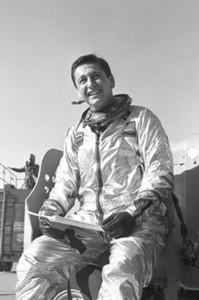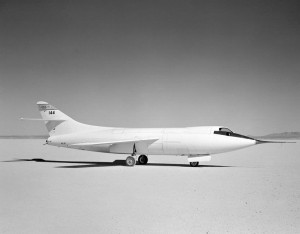My student and I finished our flight a little early and when we returned to the ramp, I saw an early model Cessna 210 sitting in front of the flight dispatch building. From afar, the airplane looked good. As I approached it, it looked even better.
The interior was in good shape. I could see no corrosion on the airframe, and the avionics were up to date. As I was admiring the airplane, an older gentleman approached.
He was obviously the pilot of the 210. “Want to take a closer look?” he asked as he opened the pilot’s door.
“Yes, I would, if it would be okay,” I replied.
“Sure,” he said as he placed his briefcase on the right seat. Then we began talking about old Cessnas. It was obvious he was a pilot’s pilot and had been around Cessnas quite a bit. We talked of the merits of the 210 and other Cessnas. Finally, I said I had to go meet my next student and he said he had to get on with his flight.
I enjoyed my short little discussion with the 210 pilot. As he climbed into the airplane, I walked into dispatch and met my friend, Rich.
“Do you know who you’re just talking to?” Rich asked.
“I don’t know – some old 210 pilot who really knew a lot about the airplane.”
“Oh, I am sure he knows about 210 as well as a lot of other airplanes.”
“What do you mean?” I asked.
“That was Scott Crossfield.”
I jerked my head around to see the 210 taxiing away from our ramp. Wow, a true American hero, I thought.
While I was talking to him, he came across as simply another Cessna pilot. During our discussion, I had the fleeting thought I would enjoy sitting down and picking this man’s brain a little more deeply regarding his knowledge about Cessnas. I knew he would be one of those pilots who would fit in nicely with our little group of aviators at the home field.
And then, he turns out to be Scott Crossfield! The Scott Crossfield. Today, I wonder how many young people learning how to fly even know the name Scott Crossfield. I question how many know of his history and his contributions to the field of aviation.
Crossfield was born October 2, 1921 and grew up in California and Washington. He enlisted in the Navy and fought in World War II as a Navy fighter pilot. After the war, he went on to acquire both his baccalaureate and master’s degrees in aeronautical engineering. Then he began his work as a test pilot at Edwards Air Force Base in California.
On November 20, 1953 while working for the National Advisory Committee for Aeronautics’ (NACA), Crossfield became the fastest human alive when he piloted the Douglas D-558-II Skyrocket at twice the speed of sound. Later, after joining North American Aviation, Crossfield became instrumental in the design of the X-15.
Crossfield would go on to become a division vice president of Eastern Airlines, then a senior vice president at Hawker Siddeley, and finally he served the U.S. House of Representatives on their Committee for Science and Technology.
On that day in the late 1990s when I met him on the ramp, I think Crossfield was content with being merely Scott, just another Cessna pilot.
-30-
©2010 J. Clark



Joe:
I met Scott Crossfield about 16 years ago while instructing at Riddle. Very friendly individual. I have read his book : “Always Another Dawn” which talks about his flying career, in particular his involvement with the X-15. I routinely donate money to the Scott Crossfield Foundation, which is run by his daughter Sally. The Crossfield Foundation awards resources to people who are educators in the field of aerospace.
This event took place about then. And yes, I have to say, he was very friendly, a great person. Could you imagine flying at Mach 2+?
Three names stand out in my memory from my younger days, Robert L. Scott, Chuck Yeager and Scott Crossfield. As I grew older I became more critical of information published about heros but those names endured the test of time in my own mind. At about the same time Scott Crossfield’s Cessna 210 was torn apart in a storm I was skirting the storm to the north in our RV-6A on a trip from northwest Arkansas to western North Carolina. I was able to stay in the clear but the clouds to the south were ominous. I later read the negative article about the accident by the AOPA air safety foundation director with excerpts from the ATC communication. I stopped reading the author’s articles after that. I have since spent a significant amount of money to buy a copy of his book “Always Another Dawn” and became more learned about this great aviator’s life. It is good to see a positive write-up about the man from someone in the aviation business who actually met Scott Crossfield, talked to him one on one, and studied his airplane quality.
Bob Axsom
Bob,
Nice to meet you, if only over the ‘trons of the Internet.
Thanks for your comments. I remember the article of which you speak and I know what you mean. Sometimes writers can totally miss the mark. I think Mr. Crossfield made a mistake that day, and as I am fond of telling my students with a smile, “Hey! I have never made a mistake in my life!” I let them know they are going to make mistakes in their flying, it happens to all of us, and when we are lucky, we learn from those mistakes. They just have to be careful not to ever make the last mistake.
Have you had the chance to go to the Georgia Museum of Aviation at Warner Robbins AFB near Macon, GA? It is a very good museum and has a great deal of memorabilia regarding Robert L. Scott and his career. He was also a fascinating aviator and good human being.
Take care,
Joe